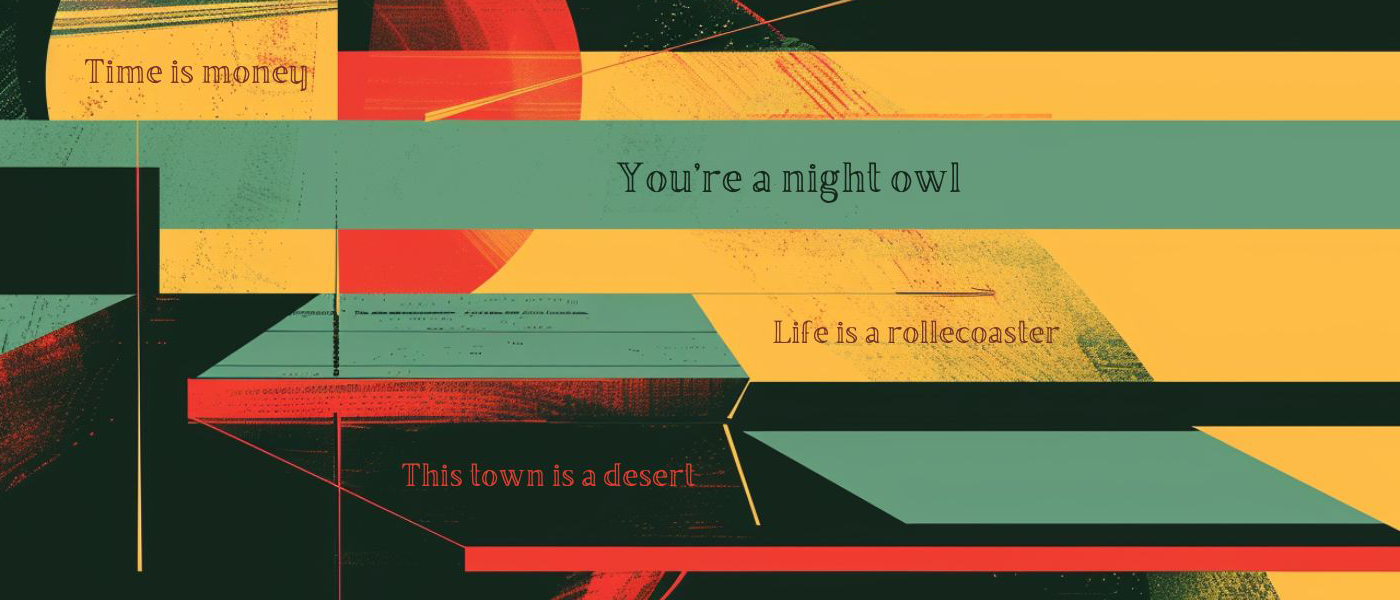Metaphors hold a special place as powerful tools for conveying complex ideas and emotions. From Shakespeare’s evocative imagery to contemporary poetry, metaphors enrich our communication and stimulate our imagination. In this article, we’ll explore the concept of metaphors, delve into various examples, discuss different types, distinguish them from similes, and even learn how to create our own.
What is a Metaphor?
At its core, a metaphor is a figure of speech that draws a comparison between two seemingly unrelated entities to suggest a resemblance or connection. Unlike literal language, which states facts directly, metaphors invite readers to make imaginative leaps and uncover deeper meanings. By associating one thing with another, metaphors enhance the vividness and impact of language, allowing writers to evoke emotions, create imagery, and compellingly convey abstract concepts.
Metaphor Examples
Metaphors are ubiquitous in literature, poetry, everyday language, and even in our thoughts. Here are a few examples to illustrate their versatility and beauty:
- Time is a thief. (Metaphorically equating time to a thief to convey its elusive nature and its ability to steal moments from our lives.)
- Her voice was music to his ears. (Comparing the pleasantness of her voice to the beauty of music.)
- The world is a stage. (Equating the world to a stage suggests that life is like a theatrical performance, with people playing various roles.)
- Love is a battlefield. (Metaphorically likening love to a battlefield to convey the challenges and conflicts inherent in romantic relationships.)
Types of Metaphors
Metaphors come in various forms, each serving a distinct purpose in language and literature. Some common types include:
- Dead Metaphors: Metaphors that have become so ingrained in language that their figurative meaning is no longer apparent, e.g., “the leg of a table.”
- Extended Metaphors: Metaphors that are developed and sustained over several lines or throughout an entire literary work. (also known as sustained metaphors).
One example is Shakespeare’s Shakespeare’s Romeo and Juliet. In Act 2, Scene 2, Romeo famously compares Juliet to the sun in a soliloquy:
‘But, soft! What light through yonder window breaks?
It is the east, and Juliet is the sun.
Arise, fair sun, and kill the envious moon,
Who is already sick and pale with grief,’
This metaphor extends throughout the scene as Romeo continues to describe Juliet’s radiant beauty and the transformative effect she has on his world. He compares her to the sun, symbolising her brightness, warmth, and life-giving qualities, while contrasting her with the moon, which represents darkness and coldness.
- Mixed Metaphors: Metaphors that combine two or more incompatible metaphors, often resulting in unintentional humour or confusion, e.g., “We’ll burn that bridge when we come to it.”
Metaphor vs Simile
While both metaphor and simile involve comparisons, they differ in their structure and degree of directness. A metaphor asserts a direct equivalence between two entities, whereas a simile uses “like” or “as” to make a comparison more explicitly.
His words were daggers. (Metaphorically suggesting that his words were sharp and cutting.)
In contrast, similes offer a more direct and explicit comparison, allowing for a clearer illustration of the shared characteristics between the two subjects.
Her laughter was like music to his ears. (Using “like” to compare her laughter to the pleasantness of music.)
How to Create a Metaphor
Crafting effective metaphors requires creativity, imagination, and a keen understanding of the nuances of language. Here are some steps to help you create your own metaphors:
- Identify the subject and the object of comparison.
- Consider the qualities or characteristics of each entity.
- Look for similarities, contrasts, or associations between them.
- Experiment with different linguistic devices such as imagery, symbolism, and wordplay to express the comparison.
The Power of Figurative Language
By understanding what metaphors are, exploring various examples and types, distinguishing them from similes, and learning how to create them, we can harness the power of metaphorical language to communicate more effectively, evoke emotions, and ignite the imagination.
Unlock the full potential of your writing with our expert academic proofreading services. Let us help you refine your prose, polish your metaphors, and elevate your language to new heights. Contact us today to take your writing to the next level.




